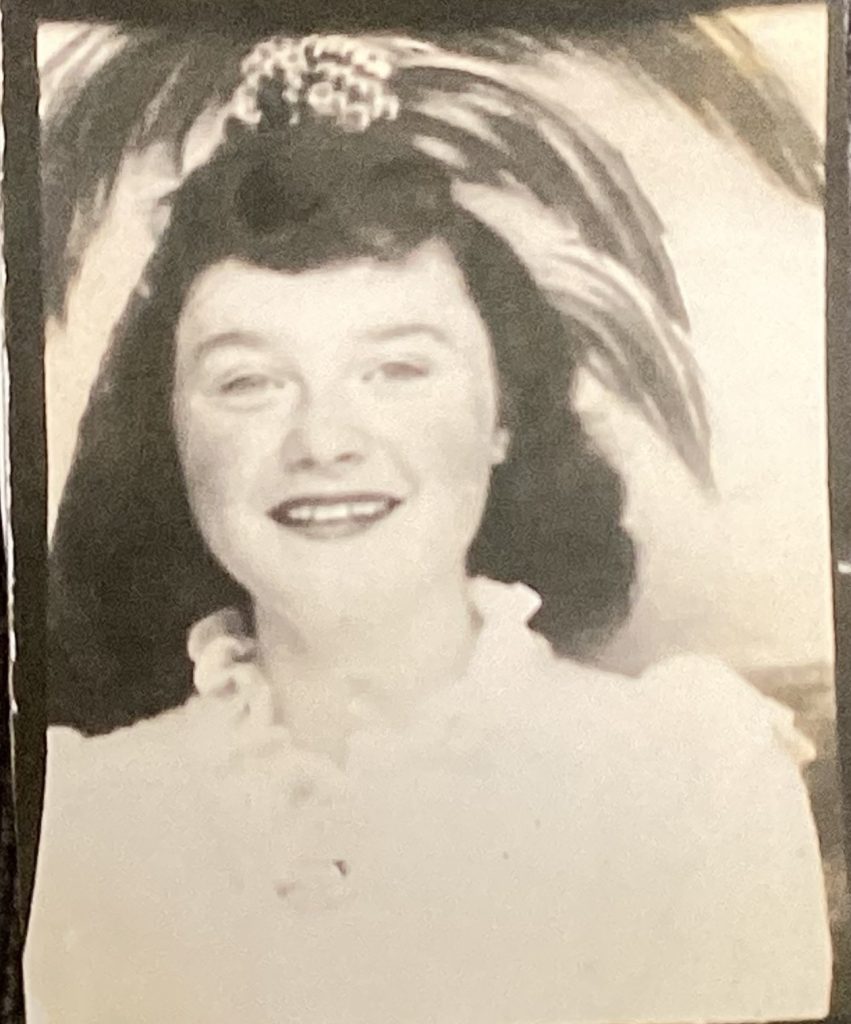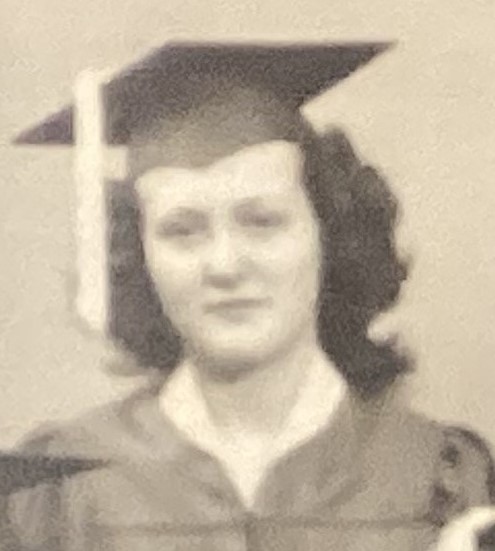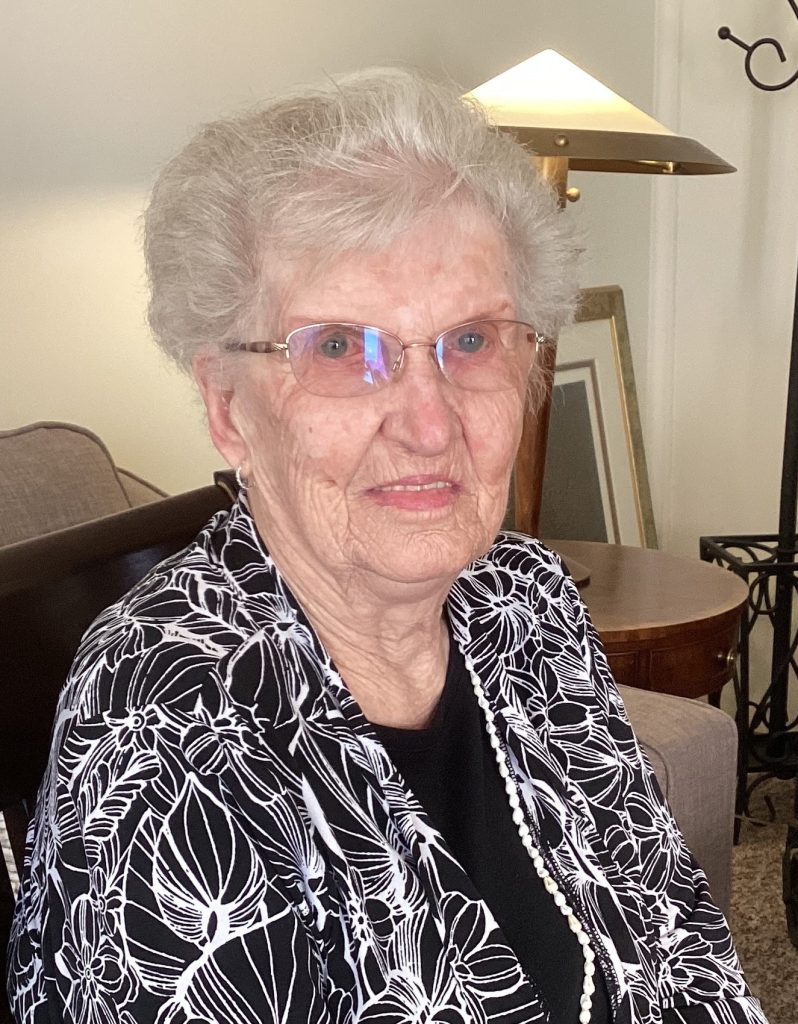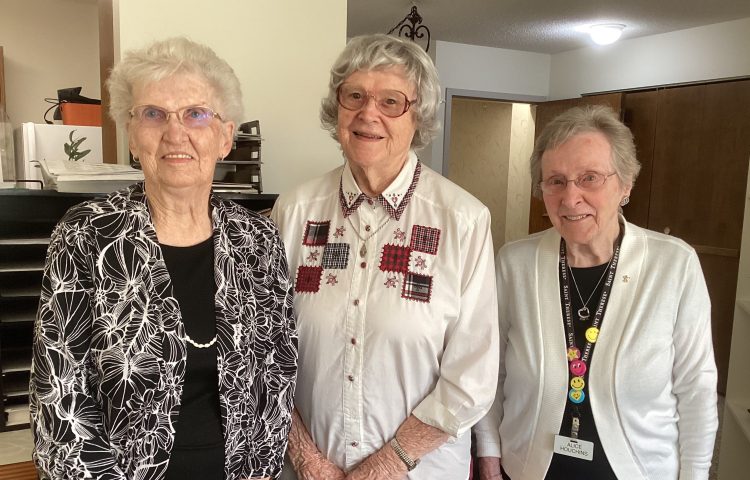This week, May 6-10, is Teacher Appreciation Week in the U.S., and while some former teachers who live in our Saint Therese senior communities are no longer teaching – at least formally – we still want to recognize them for their service to our nation’s children.

At Saint Therese of New Hope, there are three former teachers who all taught in one-room schoolhouses, something that is almost, but not entirely, non-existent today. The three women – Theresa Eissinger, Jean Geurts and Alice Houchins – shared their unique experiences teaching kids in those one-room classrooms.
The three all grew up and then taught in the rural Midwest. And while the circumstances were sometimes hard and required extreme resourcefulness, they said they always felt appreciated and respected by the schoolkids in their care.

Theresa Eissinger, 95, is from Napoleon, North Dakota, a small, heavily-German town in the southcentral part of the state. After high school she went to Valley City, N.D., to get her teaching certificate and was just 17 when she started teaching in the Foster District, near her hometown.
“There wasn’t much else you could do, except be a teacher, unless you wanted to work in a restaurant,” said Theresa. “It was very natural to become a teacher.”
She taught about 15 children at most in the schoolhouse, and like kids today, some took to education and others didn’t. She felt some of the older boys just put in their time because they knew they were going to be farmers. And many times, they had to stay home and help with the farming. She found the girls to be very interested in school and were good students.
There weren’t any problems with the kids, she said. “They had the family behind you so there were no discipline problems. This was a time when the priest was the most respected person in town, the judge was second, and teachers were third.”
Theresa said you had to mix in fun things to keep the kids engaged, especially on Friday afternoons. They’d also have rallies where all the schools in the county would come together and do skits, hold spelling bees or run races.
One of her favorite memories is a boy named Vernon, who still couldn’t read in the third grade. She had a lot of time to work with him and used flash cards to help in the process. Vernon ended up finishing eighth grade and went on to high school. “He didn’t become a farmer but moved to Minneapolis. He looked me up 40 years later and thanked me for teaching him how to read.”
Jean Geurts, 94, grew up in New Effington, a small town of about 350 in northeastern South Dakota, near the border of North Dakota and Minnesota.

After graduating from high school, she went to college for one year at St. Catherine’s in St. Paul. The summer after her first year, she learned that the school board in nearby Harmon Township, near Rosholt, S.D., was looking for a teacher. They were interested in Jean because of her excellent standing in high school and her one year of college. Also encouraged by her parents, Jean took the job, thinking it would be for one year. Her fiancé lived near the school so that was an added incentive.
She had seven children in her school, all in different grades except for two twin boys in the first grade. Having never been in a one room schoolhouse, Jean said she was a bit frustrated the first month. But with the help of her mom, who was a former one room schoolteacher, and another nearby teacher, she learned how to create the class schedules. From that time on she enjoyed her teaching profession. Her students told her that she was the best teacher they’d ever had, and to this day one of them is a very close friend.
The schoolhouse had its hardships. There was no running water for the indoor toilets, and she had to get to school incredibly early to get the wood and coal furnace going for heat. “We all brought in our lunch pails and often would bake potatoes on the furnace,” said Jean.
That first winter was very bad and she said the 12 miles of country roads she drove from home were frequently blocked with snow. She spent the winter boarding with the family of the first grade twin boys who lived a half mile from the school. “I really had to bundle up to walk the distance.”

School wasn’t all work, Jean said. “My group liked to put on programs for their parents and neighbors where they’d recite poems and sing. We also have fun at recess.”
One incident Jean remembers well. They turned her Model T Ford, which she named “Cadilly” into a “little red schoolhouse” by decorating it to enter the homecoming parade at the high school in Rosholt. “So, we all got into Cadilly and drove for town. Unfortunately, the wind came up strong and blew all the decorations off. It was quite a disappointment!”
Jean said the thing that was neat about being in a one room schoolhouse was that the older kids helped the younger ones. “There was a camaraderie, and they helped the little ones. It was a great life experience for me.”

Alice Houchins, 96, grew up on a farm just north of Pierz in central Minnesota, about two hours north of the Twin Cities. After high school she had one year of Normal Teachers Training in Little Falls.
After two weeks of practice teaching in a country school and also teaching third grade in a city school in Little Falls, she began teaching in the same schoolhouse as her grandfather taught, five miles north of Pierz. She was 19.
In the winter she had to board with her uncle who lived within walking distance of the school, but she wasn’t too happy about it and not only because his home was so cold in the winter. For instance, she noticed that all the students were bringing coffee to school, and she didn’t think that was healthy. So, to be a model to her students, she asked her uncle (who was milking cows at the time), if she could have some milk to bring to school for her lunch. He replied, “can’t you drink coffee?” That angered her dad and he said, “you’re coming home!”
At times in the winter, her dad had to use horses to get her to school, having her ride on what was called a stone boat (type of sled for moving heavy objects) that was led by the horses. One time the snow was so deep that the horses became unhooked, and Alice flipped face first into the snow.
“It was as cold inside as it was outside,” said Alice. “We had to start a fire and the kids would be wearing their coats and mittens during class until the room warmed up.”
Before she took the job, she was told by the chair of the school board that the kids would not be well-behaved, because the previous teacher hadn’t used any discipline. Alice put the kibosh on that and by her second day she had a chores list for everyone, from having one child bring in wood for the stove to another getting water for the cooler, etc.
The kids talked German all the time at recess and Alice said a first grade student named Elmer, couldn’t speak any English. She got them to start talking English during recess and soon Elmer was fluent.
She too felt the rural school was a benefit to the students because the younger kids listened to the upper grades and learned from them.
Alice enjoyed the Christmas program which she would organize and have the kids sing and perform skits. “They loved it because they had to memorize and rehearse.”
As was the case at that time, the teaching careers for Theresa, Jean and Alice ended when they married and took on the responsibility of – perhaps the most respected profession – becoming moms!
Thank you Theresa, Jean and Alice, for your time as teachers and for sharing your stories. And thank you to all the other former teachers who now call Saint Therese home.
We asked the three women why they decided to move into Saint Therese of New Hope:

Theresa Eissinger moved into Saint Therese of New Hope in 2019, chiefly because it was Catholic-based. She moved from her home in North Dakota to be closer to her two daughters who live in the metro area. She said she had no problem adjusting to the community when she arrived and now calls Saint Therese “home.” In particular she appreciates how friendly everyone is.

Jean Geurts said she moved into Saint Therese in 2018 because she could go to Mass on a daily basis. She also had four kids who live in the area. She’s active in the community – she plays cards (bridge, 500, pinochle and euchre), the library, the programs provided by the Pastoral Care team and tours to places like the Minneapolis Institute of Art.

Alice Houchins moved into Saint Therese in 2016 with her husband, Ken. She said they always had in mind that they would move here because they had several friends they had visited in the apartments and the care center. Her husband died in 2023 but Alice has stayed on because she said she especially likes the friendly staff and has made many friends over the years. She said there are many activities she participates in as well.


2 comments
Carol Peine
Loved the article about the teachers in the rural school setting. Alice Houchins was both a cousin and my first and second grade teacher. I cannot imagine a young teacher teaching the 8 grades first thru eighth grade but Alice did a good Job. My first impression of the grade eight boys was they were giants in the classroom. I did not have older siblings but found those boys to be especially good to the little ones in our school. Respect was a common trait amongst the farm boys living in our area. Thank you to all the teachers from the one room schools.
Mary Kavanagh
I’m so proud of my Mom, Alice Houchins, for everything she’s done, whether it was teaching in the one-room schoolhouse in Pierz, raising my brothers and me while also working PT to help supplement the family budget, and being an active member of our local community and church of St. Gerard’s in Brooklyn Park. Although she taught only two years, she inspired many both within the classroom and continued teaching outside of the classroom. Mom mentioned to me that her favorite subjects to teach were English and Math, but I think she must also have a love for teaching History. She served as honorary historian at St. Gerard’s Catholic church and preserved an amazing amount of information about the parish since 1969. More importantly, Mom continued to inspire her family and friends with being a positive influence and gift to all who know her. Thanks, Mom!